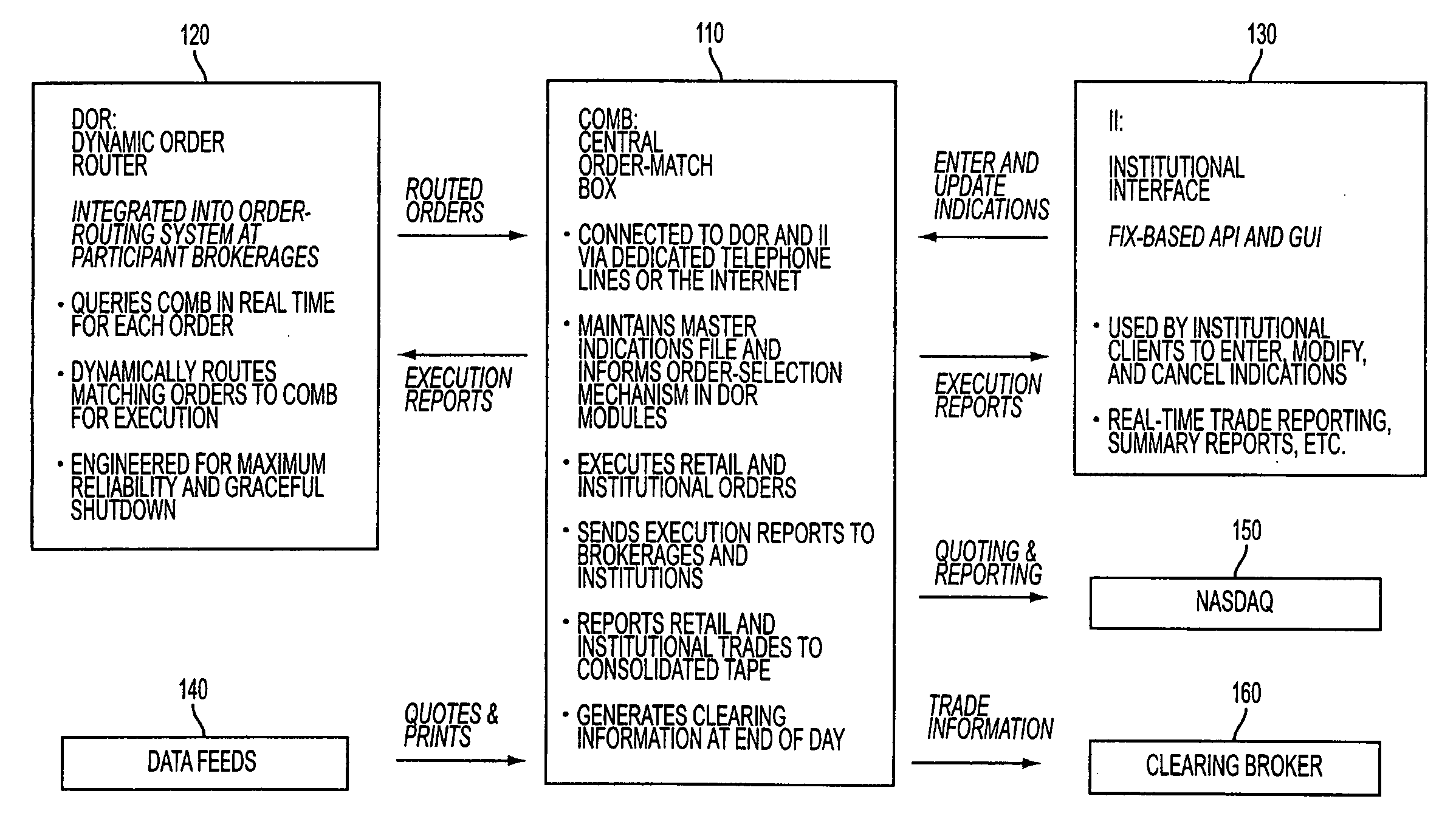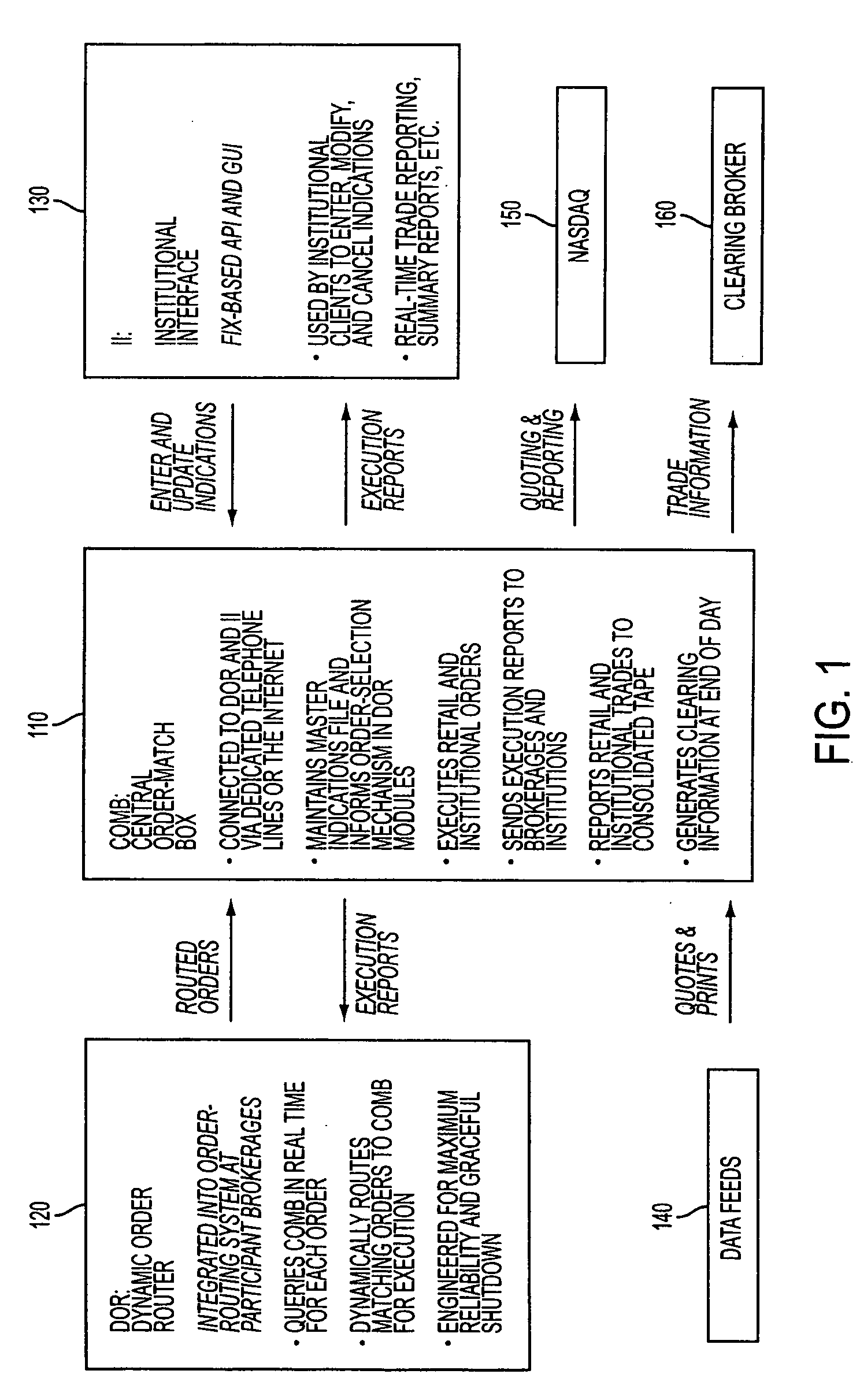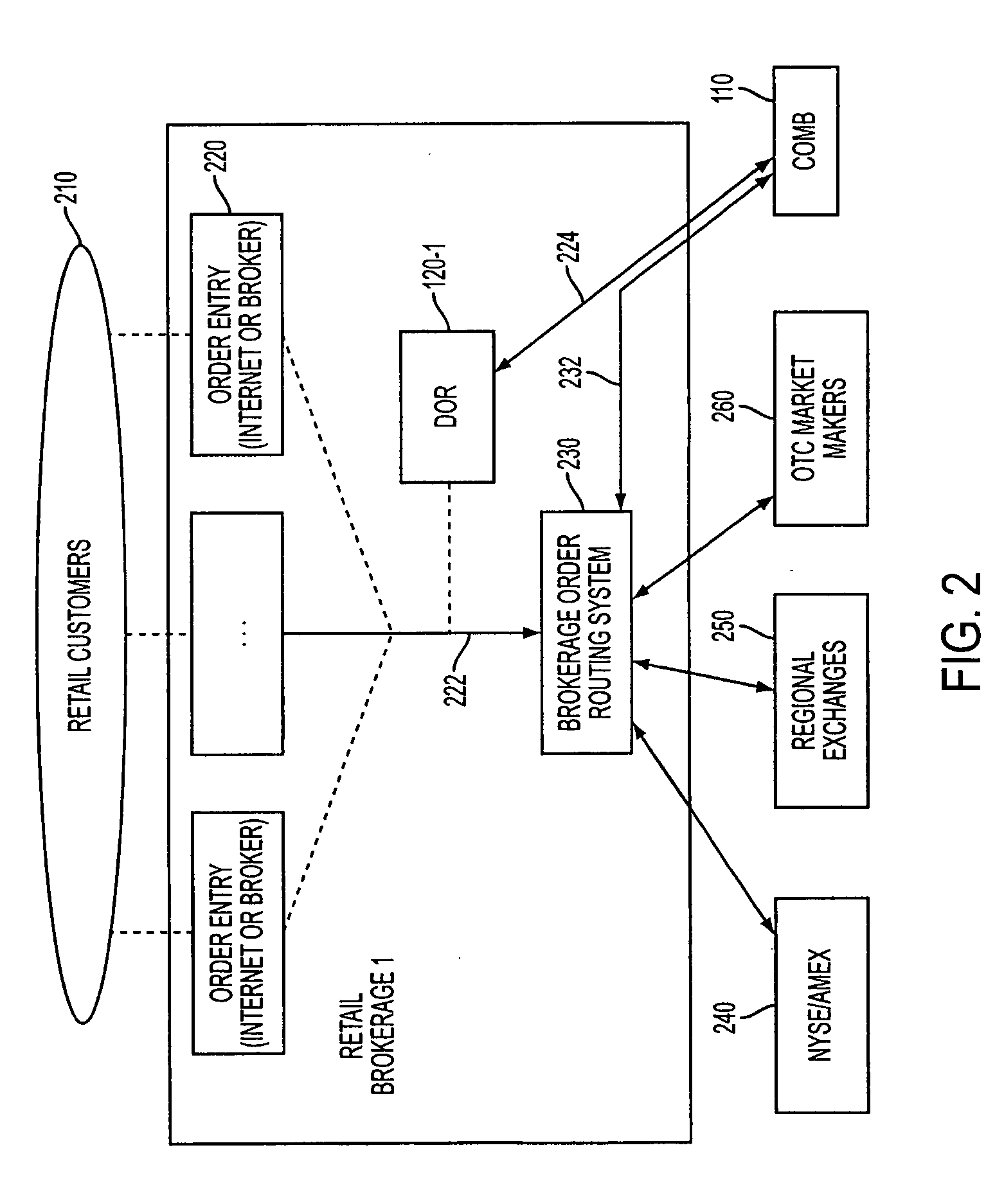[0008] Embodiments of the present invention are expected to be very attractive both to retail brokerage firm participants and institutional clients. By interacting anonymously with generally information-less retail trading interest “upstream” of traditional execution points (that is, OTC market-makers, exchanges, ECNs, and so forth), institutions will for the first time enjoy automated
electronic access to marketable retail orders, which represent an attractive new source of substantial market liquidity. In an embodiment of the present invention, both retail marketable orders and offsetting institutional indications can be executed at prices inside the quoted NBBO spread (that is, at prices between the national best bid and national best offer). In this embodiment, retail brokerage firms would, through the use of the
System, provide their customers with executions evidencing, on average, a high degree of “price improvement” relative to other market centers. In addition, pursuant to a remuneration arrangement with the
System sponsor, the retail brokerage firms would realize a greater portion of the intrinsic economic value of their marketable retail order flow. The impending decimalization of U.S. equity markets, which is likely to result in five-cent trading increments for most NYSE, NASDAQ, and Amex securities by Jul. 3, 2000 and penny increments by Jan. 2, 2001, will further enhance the attractiveness of embodiments of the present invention. The narrower average spreads, which should result from this transition to smaller decimal trading increments, are likely to decrease the liquidity available at the NBBO and reduce or eliminate traditional remuneration for retail order flow by Third Market and NASDAQ dealers. By facilitating access to a steady
stream of retail liquidity for institutions and providing a relatively stable source of order flow remuneration for retail brokerages, embodiments of the present invention will be particularly compelling in the decimal trading environment. It should be noted that while the
System is designed primarily to facilitate the continuous and immediate interaction, without waiting for set times, between institutional trading interest and retail marketable orders, the System could also permit similar continuous, immediate, automatic and fully electronic institution-to-institution crosses. These institution-to-institution crosses will generally occur at the midpoint of the NBBO whenever institutional clients willing to transact with non-retail trading interest enter two or more offsetting institutional indications.
[0014] The embodiments of the present invention are also intended to represent any crossing network which facilitates continuous (as opposed to periodic, or call-based), fully electronic, anonymous, automated, non-display-based interaction between professional market participants and retail marketable orders. In an embodiment of the present invention, in order to minimize the near-term disruption of existing business relationships between the retail brokerage firms and the OTC market-makers, exchanges, and other trading venues to which these retail brokerage firms currently
route retail orders for execution, the network will divert for immediate execution on the System only those binding retail marketable orders for which the System has binding professional trading interest already in hand, that is binding indications, allowing all other retail orders to flow to other execution points. “Binding” orders and “binding” indications represent firm commitments by originating parties to trade securities, where the commitments do not require additional confirmation or approval from the originating party in order to execute a trade based on the firm commitment, as long as the binding order or binding indication remains active. The present invention is offers from originating parties to trade securities, where the offers do not require additional confirmation or approval from the originating party in order to execute a trade based on the firm offer. not, however, limited to such an embodiment, that is, to a crossing network based on selective diversion of marketable retail orders. Specifically, the present invention can be represented by any crossing network which facilitates the interaction of retail marketable orders and professional trading interest in a manner substantially similar to one described in this application. Therefore, the present invention contemplates covering OTC market-maker, ECN, national or regional stock exchange, or other execution point systems which allow professional market participants to interact immediately, continuously, electronically, anonymously, automatically, and without display of their trading interest, with retail marketable orders routed to that execution point. For example, one contemplated embodiment of the present invention involves a system for an OTC market maker that matches incoming retail marketable orders with third-party institutional orders in a manner substantially similar to that described in this application. This system allows the market-maker to collect risk-free commission revenue (from institutional clients) for any institutional shares executed against retail order flow in this manner, while handling non-matched marketable retail orders in the traditional manner (that is, interacting them with offsetting limit orders on the market-maker's book, and / or committing capital to execute them as principal). It should be noted that such an embodiment of the present invention would not require any selective diversion of retail order flow to the system. This is because retail brokerages would already be routing orders (using traditional, static order-routing criteria such as symbol, order size, and order type) to the OTC market maker for execution.
 Login to View More
Login to View More  Login to View More
Login to View More 


